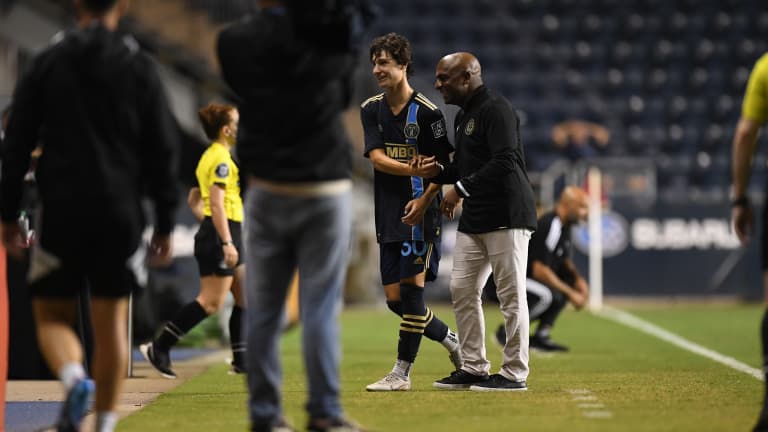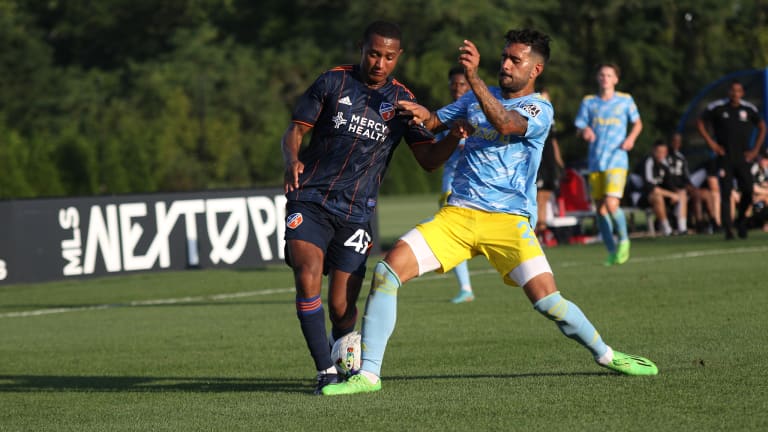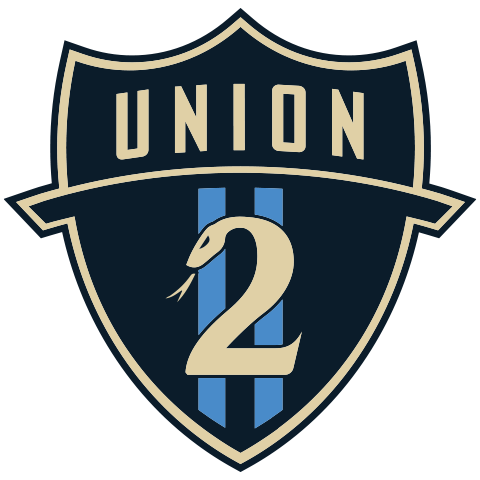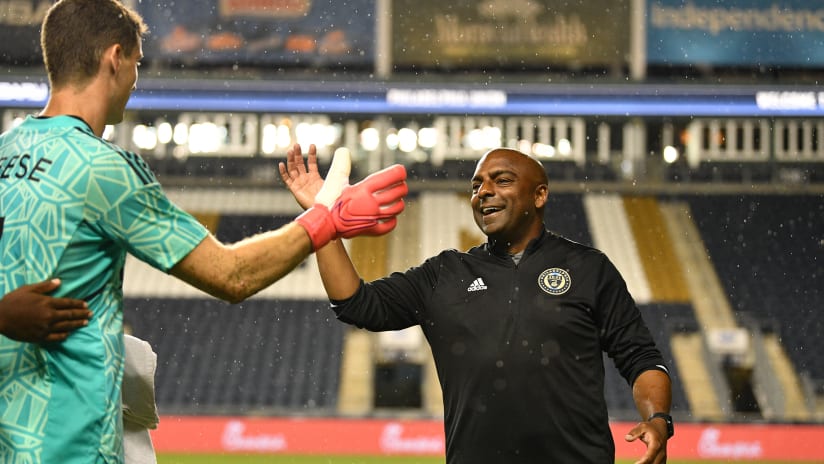You might be tempted to attribute Philadelphia Union’s success this season to the consistency with which Jim Curtin has been able to roll out his preferred lineups. On the surface, this makes sense: If you can turn to your best eleven players each week, you have a better chance of winning.
But step back and view the Union as a club rather than a single team, and more complexity emerges.
For instance, Philadelphia Union II has dropped the same lineup only twice all season, and head coach Marlon LeBlanc has never put out the same eleven in back-to-back matches. Yet Union II finished third in MLS NEXT Pro’s Eastern Conference, and they locked in that spot on the road with a squad largely devoid of first team players.
So yes, the success of the Union and Union II teams this season is partly about individual talent. However, it’s also about a clarity of purpose, and a methodology that allows significant flexibility to wend its way between more rigid philosophical beliefs.
“What we've done with our model is shape it to the players, but stay true to the Union identity, our pressing philosophy, our counterattacking philosophy, our high-speed actions, and we've made it work for a group that doesn't train together on a regular basis,” LeBlanc said this week.
Union II’s numbers in the back half of the 2022 season mirror the first team: They are near the bottom of the league in possession but have begun creating big changes — and finishing them — at a much higher rate than they did in April and May. There were tactical adjustments behind this success, but there are also mental adjustments and growth, both by players and coaches, behind the incredibly young club’s rise up the standings.

LeBlanc stays after his own training sessions to watch the first team, and makes the most of the minutes he gets with players like Paxten Aaronson and Quinn Sullivan. This relationship-building is, first and foremost, about learning to describe a picture of the players’ futures in the same language the first team coaches use, the same language the academy coaches use, and, ultimately, it’s about players learning to translate that language into their play on the pitch.
Take Matt Real. A year ago, Real looked like a high-ceiling left-back prospect with defensive holes in his game, frustratingly stuck behind one of the more versatile and complete left backs in MLS. Now, he’s a hybrid fullback/centerback/midfielder with a nose for goal and an unquestioned leadership role every time he joins Union II. Wait… what??
Here’s what happened: Every coach delivered the same message:
- Learn the system and you can play anywhere within it
- Learn the system and you’ll be able to adapt within it faster than we can teach you
- Learn the system and and your personal goals will take care of themselves
Real dragged Union II back to a 1-1 scoreline with a goal against Toronto FC II in July, then he and his teammates were left heartbroken by the visitors’ 89th minute winner.
Next came Columbus Crew 2, a team that finished +40 in goal differential and ran away with the Eastern Conference; they had scored four goals in each of their last two games. Real shifted from left back to center back and helped hold Crew 2 to a single goal in an epic 2-1 win. Union II wouldn’t lose again for another month.
What happened next is — or should be — the stuff of legend.
Following a scoreless first half against Orlando, Real stuffed home a corner and opened the floodgates for a 3-1 win. No negativity, all leadership.
Real and the rest of the Union first teamers have come to understand how valuable they can be to the rest of the Union II squad, and they don’t take that responsibility lightly.
“We've got four South Americans that are learning a new language and a brand new style of play,” LeBlanc explains. “We've got academy kids, and we do things way faster than what they do in the U17s, and we've got first-team guys who are playing with a group of guys they don't know and they do things even faster than we do.”
Real is part of that latter group, and what they bring is the intensity and speed of the first team to everything they do with the second team. Instead of viewing Union II as an opportunity to point the spotlight at themselves, they grasp something far more important: Executing their role — whether it puts them center stage or not — is what draws the eye at a club with such clarity in its philosophy.
This clarity, both in philosophy and methodology, powers a culture of intensity at the Union that many Union II players picked up during a difficult run of early summer losses that included both late collapses against TFC II.
“With young teams that don't get to train together a lot, you're susceptible to those moments,” LeBlanc says carefully. “It's not an excuse by any means, and we teeter between teaching moments where we allow them to fail or succeed on their own, and the coaching moments where I can handle it for them.”

Philly loves a winner, but it embraces teams that fight every minute of every round even if the final scorecard doesn’t go their way. Union II players saw that from Real this season, and from Matt Freese, Cole Turner, Jesus Bueno, and others. Maike Villero didn’t settle for backing up Anton Sorenson, he proved he could handle multiple roles and became a tenacious holding midfielder. LeBlanc sees the same development in players like Boubacar Diallo and Nathan Nkanji.
“All these guys that needed to play in the big game [against New England] were ready when it mattered,” he notes.
Readiness is a product of intensity, and intensity is a mentality that, as two previous matchups with TFC II have proven, is difficult to sustain over 90 minutes.
But when LeBlanc looked around after the final match of the regular season, he didn’t see celebrations.
“It was very much: Job done. On to the next one,” he shares.
“For a young group to have that mentality, I was pretty pleased. There was no relief. Alright playoffs, this is where we expected to be.”
Saturday night in Toronto, no matter the players that travel or the names on the lineup card, everyone in a Union II jersey will expect to win. Because while consistency matters, clarity of purpose is just as important.















